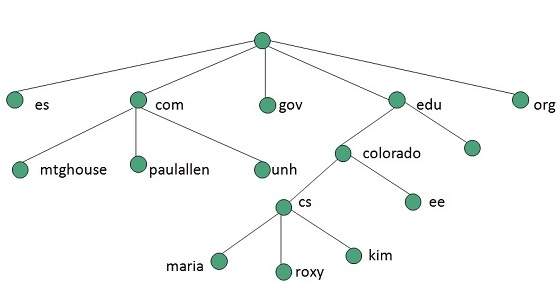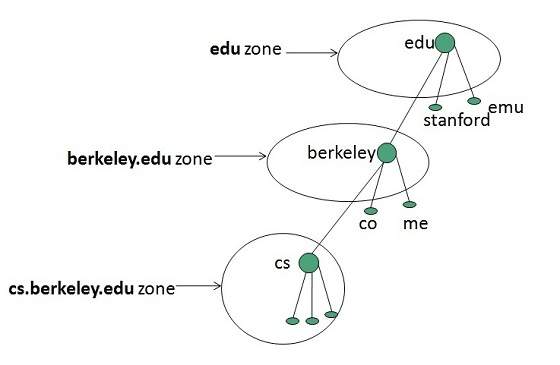
- Home
- Internet Overview
- Intranet Overview
- Extranet Overview
- Internet reference Models
- Internet Domain Name System
- Internet Services
- Internet Connectivity
- Internet Protocols
- Electronic Mail Basics
- E-Mail Overview
- E-Mail Protocols
- E-Mail Working
- E-Mail Operations
- E-mail Features
- E-Mail Etiquettes
- E-mail Security
- E-mail Providers
- Website Development
- Websites Overview
- Websites Types
- Website Designing
- Websites Development
- Website Publishing
- Website URL Registration
- Website Hosting
- Website Security
- Search Engine Optimization
- Website Monetization
- World Wide Web
- WWW Overview
- Web Pages
- Web Browsers
- Web Servers
- Proxy Servers
- Search Engines
- Internet Collaboration
- Collaboration Overview
- Mailing List
- Usenet Newsgroup
- Online Education
- Social Networking
- Internet Security and Privacy
- Internet Security Overview
- Data Encryption
- Digital Signature
- Firewall Security
- Internet Web Programming
- HTML
- CSS
- JavaScript
- PHP
- Internet Useful Resources
- Internet Quick Guide
- Internet Useful Resources
- Internet Discussion
Internet Domain Name System
Overview
When DNS was not into existence, one had to download a Host file containing host names and their corresponding IP address. But with increase in number of hosts of internet, the size of host file also increased. This resulted in increased traffic on downloading this file. To solve this problem the DNS system was introduced.
Domain Name System helps to resolve the host name to an address. It uses a hierarchical naming scheme and distributed database of IP addresses and associated names
IP Address
IP address is a unique logical address assigned to a machine over the network. An IP address exhibits the following properties:
IP address is the unique address assigned to each host present on Internet.
IP address is 32 bits (4 bytes) long.
IP address consists of two components: network component and host component.
Each of the 4 bytes is represented by a number from 0 to 255, separated with dots. For example 137.170.4.124
IP address is 32-bit number while on the other hand domain names are easy to remember names. For example, when we enter an email address we always enter a symbolic string such as webmaster@tutorialspoint.com.
Uniform Resource Locator (URL)
Uniform Resource Locator (URL) refers to a web address which uniquely identifies a document over the internet.
This document can be a web page, image, audio, video or anything else present on the web.
For example, www.tutorialspoint.com/internet_technology/index.html is an URL to the index.html which is stored on tutorialspoint web server under internet_technology directory.
URL Types
There are two forms of URL as listed below:
Absolute URL
Relative URL
Absolute URL
Absolute URL is a complete address of a resource on the web. This completed address comprises of protocol used, server name, path name and file name.
For example http:// www.tutorialspoint.com / internet_technology /index.htm. where:
http is the protocol.
tutorialspoint.com is the server name.
- index.htm is the file name.
The protocol part tells the web browser how to handle the file. Similarly we have some other protocols also that can be used to create URL are:
FTP
https
Gopher
mailto
news
Relative URL
Relative URL is a partial address of a webpage. Unlike absolute URL, the protocol and server part are omitted from relative URL.
Relative URLs are used for internal links i.e. to create links to file that are part of same website as the WebPages on which you are placing the link.
For example, to link an image on tutorialspoint.com/internet_technology/internet_referemce_models, we can use the relative URL which can take the form like /internet_technologies/internet-osi_model.jpg.
Difference between Absolute and Relative URL
| Absolute URL | Relative URL |
|---|---|
| Used to link web pages on different websites | Used to link web pages within the same website. |
| Difficult to manage. | Easy to Manage |
| Changes when the server name or directory name changes | Remains same even of we change the server name or directory name. |
| Take time to access | Comparatively faster to access. |
Domain Name System Architecture
The Domain name system comprises of Domain Names, Domain Name Space, Name Server that have been described below:
Domain Names
Domain Name is a symbolic string associated with an IP address. There are several domain names available; some of them are generic such as com, edu, gov, net etc, while some country level domain names such as au, in, za, us etc.
The following table shows the Generic Top-Level Domain names:
| Domain Name | Meaning |
|---|---|
| Com | Commercial business |
| Edu | Education |
| Gov | U.S. government agency |
| Int | International entity |
| Mil | U.S. military |
| Net | Networking organization |
| Org | Non profit organization |
The following table shows the Country top-level domain names:
| Domain Name | Meaning |
|---|---|
| au | Australia |
| in | India |
| cl | Chile |
| fr | France |
| us | United States |
| za | South Africa |
| uk | United Kingdom |
| jp | Japan |
| es | Spain |
| de | Germany |
| ca | Canada |
| ee | Estonia |
| hk | Hong Kong |
Domain Name Space
The domain name space refers a hierarchy in the internet naming structure. This hierarchy has multiple levels (from 0 to 127), with a root at the top. The following diagram shows the domain name space hierarchy:

In the above diagram each subtree represents a domain. Each domain can be partitioned into sub domains and these can be further partitioned and so on.
Name Server
Name server contains the DNS database. This database comprises of various names and their corresponding IP addresses. Since it is not possible for a single server to maintain entire DNS database, therefore, the information is distributed among many DNS servers.
Hierarchy of server is same as hierarchy of names.
The entire name space is divided into the zones
Zones
Zone is collection of nodes (sub domains) under the main domain. The server maintains a database called zone file for every zone.

If the domain is not further divided into sub domains then domain and zone refers to the same thing.
The information about the nodes in the sub domain is stored in the servers at the lower levels however; the original server keeps reference to these lower levels of servers.
Types of Name Servers
Following are the three categories of Name Servers that manages the entire Domain Name System:
Root Server
Primary Server
Secondary Server
Root Server
Root Server is the top level server which consists of the entire DNS tree. It does not contain the information about domains but delegates the authority to the other server
Primary Servers
Primary Server stores a file about its zone. It has authority to create, maintain, and update the zone file.
Secondary Server
Secondary Server transfers complete information about a zone from another server which may be primary or secondary server. The secondary server does not have authority to create or update a zone file.
DNS Working
DNS translates the domain name into IP address automatically. Following steps will take you through the steps included in domain resolution process:
When we type www.tutorialspoint.com into the browser, it asks the local DNS Server for its IP address.
When the local DNS does not find the IP address of requested domain name, it forwards the request to the root DNS server and again enquires about IP address of it.
The root DNS server replies with delegation that I do not know the IP address of www.tutorialspoint.com but know the IP address of DNS Server.
The local DNS server then asks the com DNS Server the same question.
The com DNS Server replies the same that it does not know the IP address of www.tutorialspont.com but knows the address of tutorialspoint.com.
Then the local DNS asks the tutorialspoint.com DNS server the same question.
Then tutorialspoint.com DNS server replies with IP address of www.tutorialspoint.com.
Now, the local DNS sends the IP address of www.tutorialspoint.com to the computer that sends the request.
Here the local DNS is at ISP end.